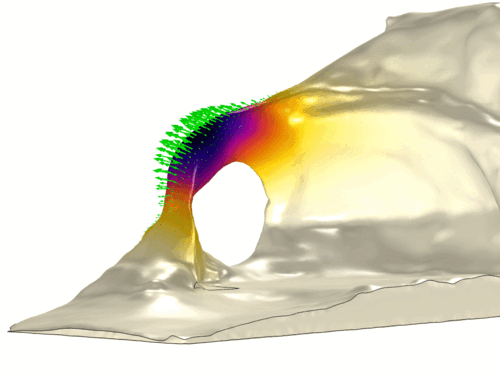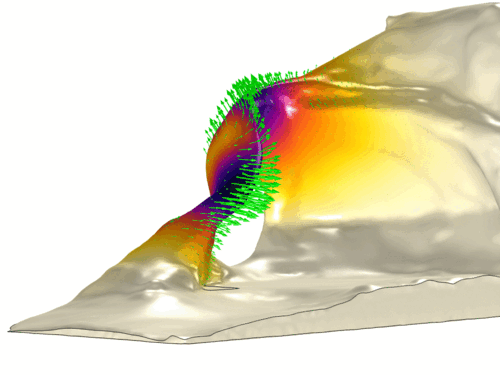



Key to our approach is measuring how arches vibrate. Rock arches have measurable resonant frequencies and mode shapes. The first resonant frequency is termed the fundamental frequency, but higher-mode oscillations are possible. Resonant frequencies are a function of mass and stiffness, and monitoring over time can reveal evidence of internal change.
We measure resonant frequencies from records of ambient motion using ultra-sensitive broadband seismometers. Excitation of the ground occurs from a combination of global earth noise (e.g. ocean waves) and local sources (e.g. wind). Analyzing the spectra of ambient vibration data, we search for peaks in power and associated frequencies. We also study the polarization of motion at distinct frequencies.
Modal analysis helps us understand the resonant modes for arches with complex geometry. We generate 3D models from field measurements and input these into finite-element numerical simulation to predict the resonant mode shapes and frequencies, and attempt to match field data. Our goal is to match the fundamental frequency and higher-order modes, some of which take interesting shapes.
Pictured are results of modal analysis for Funnel Arch. The 3D model was generated from drone-based photogrammetry. We show the first two predicted modes of vibration. Field data are used verify these results and calibrate model parameters to match measured resonant frequencies.
We work at a number of sites in Arches and Canyonlands National Parks and surrounding areas. Our work is permitted by the National Park Service and funded by the National Science Foundation.
